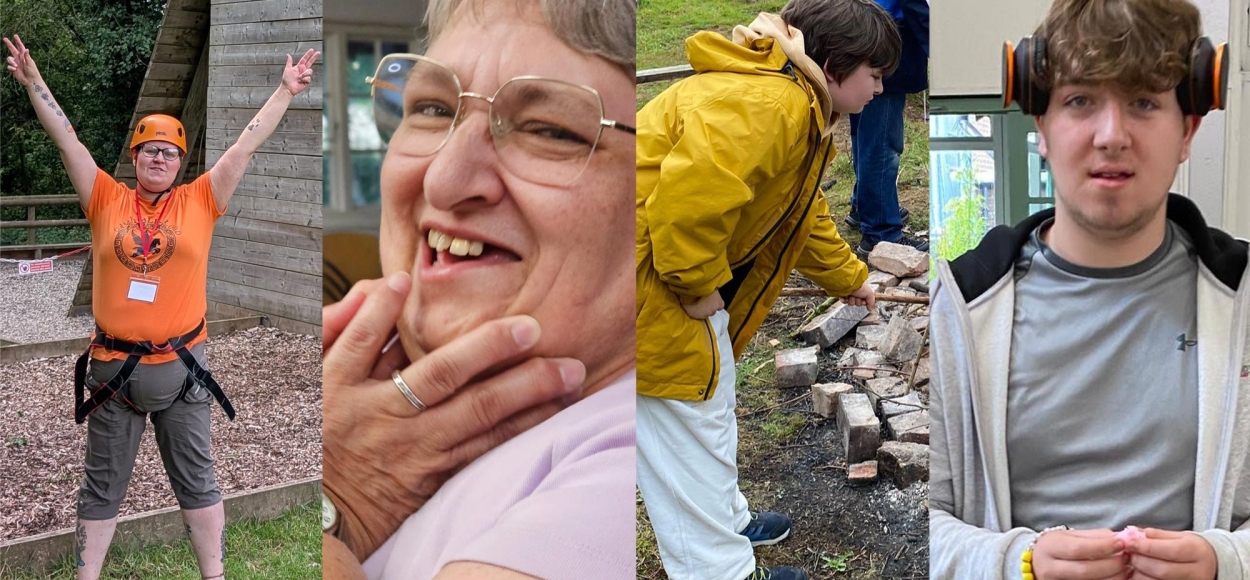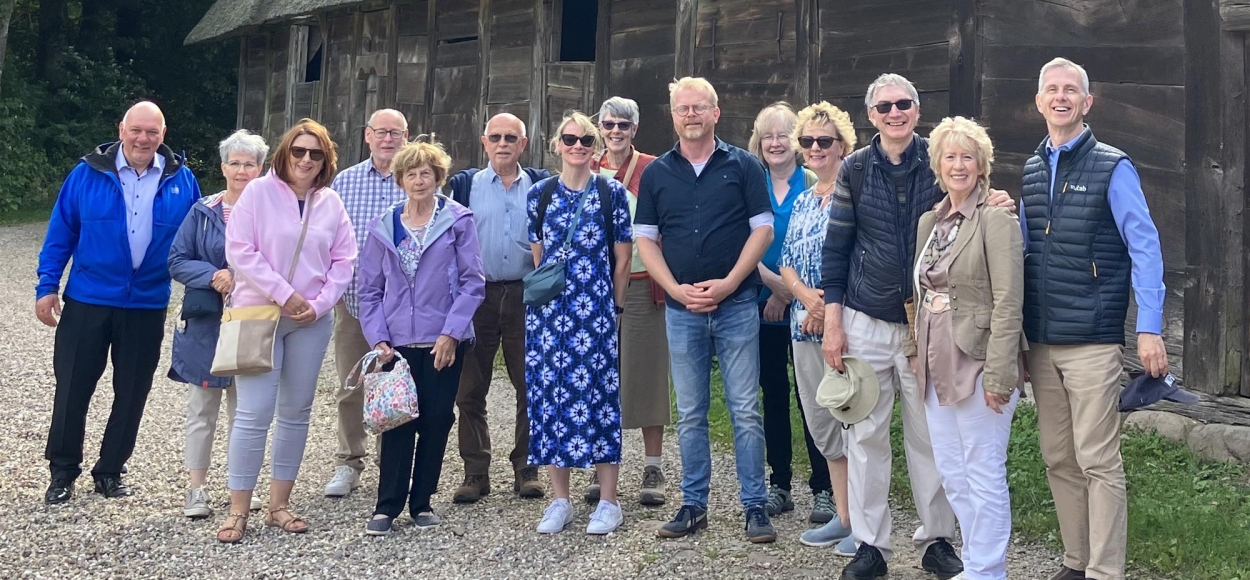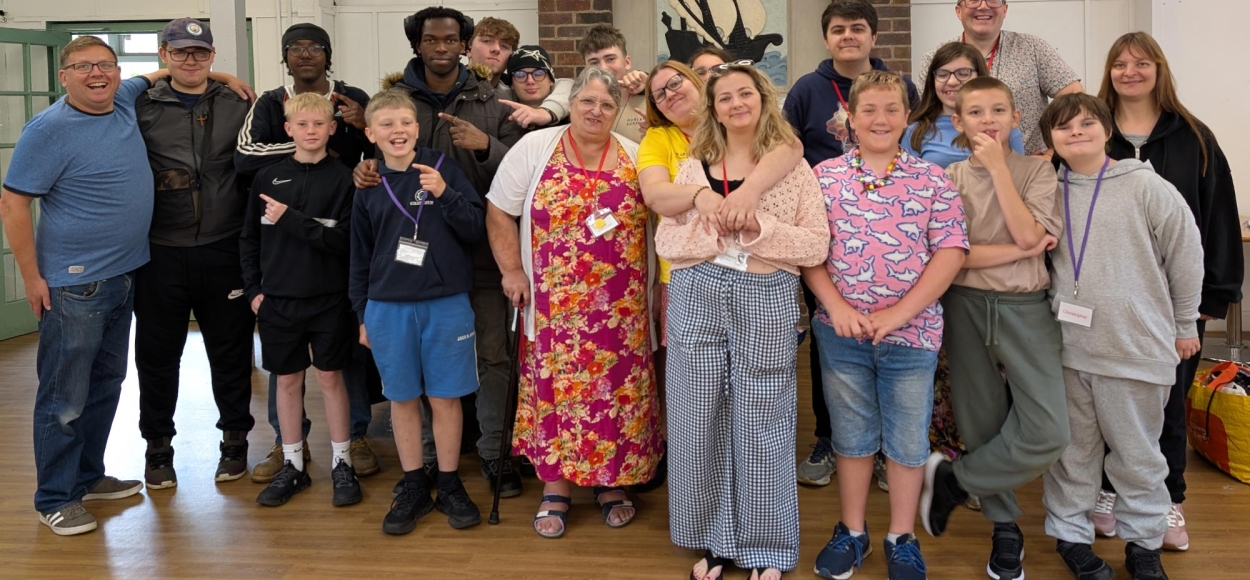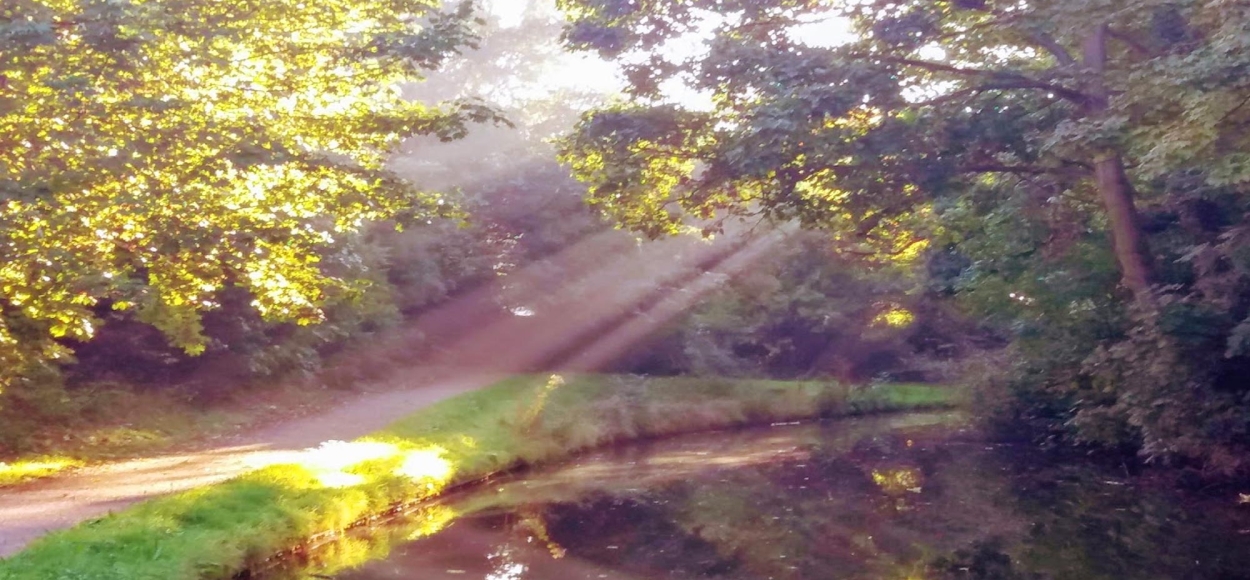If only stones could talk
A very early rise on the morning of Saturday 28th June 2025 saw various members of Gracehill up and about, ready to set off and meet others belonging to the Moravian Church in Ireland History and Heritage Society at Sprucefield, outside Lisburn. Our first visit was to be Cootehill and our second the Moravian graveyard at Whitechurch Road, Dublin. In total basically a driving time of three hours to visit both places – how long, many years ago, would it have taken people from Gracehill or Cootehill to travel to Dublin – all done by foot and by horse?
At Sprucefield Mark Kernohan and the rest of the group were waiting for us. All were set for a day discovering burial grounds and gravestones.
I had visited Cootehill a few years ago but with no idea of its Moravian history. I later discovered the work of Patrick Cassidy, ‘The Moravian Church in Co Cavan 1751-1924’, which is an excellent account of the area. Of course, rushing back to Gracehill to inform Sr Roberta Thompson of this, I discovered that the author had already been to the village and stayed with her!
Here is a very short history of Cootehill for those not aware of this village. It is a market town in Co Cavan between Monaghan and Cavan town.
The earliest reference to Moravians here is 1751. It was visited by John Cennick in 1752 and a congregation came into being in 1765. The Burying Ground was first mentioned in 1771 – those who had died before this date were buried in Gracehill or other Moravian burial grounds. Some well-known names who visited the village were Bishop Boehler, Turkington, Latrobe, Nitschman, Toeltsig and John Wesley, to mention just a few. In the early 1800s the population was in decline and looked on the verge of extinction but the interest of Br John Carey called for the re-establishment of the ministry. In 1826 Br John Willey was appointed and added life back into the area. The last minister to serve in Cootehill was Rev William Osborne Lang who baptised his grandson there in 1924. Having discovered all this information, I think this is another subject to research!
On arrival at Cootehill we parked in front of two small cottages. These turned out to be the original Moravian Church (founded 1754)! It would be lovely to see an information sign as you would have no idea what these buildings had once been. Two hundred yards up the road and over the bridge, we arrived at the burial ground which had been taken over by the Church of Ireland. Only a few stones remain to be seen, but, with a lot of clearance from our group, some names started to appear. There is a list of burials in PRONI and we will look into them.
After ‘uncovering gravestones’ we had a lovely reading by John Costley of a short poem entitled ‘The Moravian’s First-Born’ by the Rev Henry Henderson. This was written when Henderson saw a Moravian clergyman and his wife standing at the grave of their first born and only child. With some research John thinks it is about the burial of Charles Frederick, the son of Rev Charles Sutcliffe and his wife Elizabeth in 1846. ‘The mother grieves for her darling boy, Oh! Dear to her was her first-born joy.’ A lovely but sad way to finish the visit.
Back on the minibus again we headed off to the Moravian burial ground in Dublin. Now this is where my ignorance definitely appeared! I thought ‘church in Dublin, burial ground beside church’! Not true! In 1754 the Moravians decided to build a new church behind the house in Bishop Street but only had room for a small burial ground. In 1764 a plot of land became available in Whitechurch, Co Dublin (leased from a Moravian member, Moses Verney), this was enlarged by half an acre in 1776 and in 1874 the present entrance (the iron gate and Moravian symbol) was constructed. It is in a really beautiful place and it is stated that over 700 members have been buried there: sisters on one side and brothers on the other. For many years the ground was neglected until members of the Grange Golf Club (situated beside it) asked for the walls to be looked at in 2012. Unfortunately, the gentleman who looked after it has just retired and the church is in the process of trying to get a replacement. At the minute it is really overgrown and quite a bit of work would be needed to clear it. Maybe we should organise a works party to do that!
On entering the grounds, we immediately noticed two newish gravestones – on the brothers’ side – which were turned in the wrong direction. One belonged to Ann Telford Monson who died in 2017 and the other to John Herbert Desmond Monson who died in 2004. It seems these have been placed here quite recently and there may actually be the two bodies in the one grave. There seemed to be no room on the Sisters’ side for Ann Monson. We tried to change the positions of the gravestones, but this was impossible as they were firmly implanted.
We also had a look at the burial stone of the first person to be buried here: John Toeltschig (1696-1764). When he died in 1764 the burial ground in Dublin was not in place and it was his last wish that prompted the Brethren to get on with the task of providing one. ‘After the liturgy was over, … glad and thankful that this congregation had a burial ground of their own where the bones of our brethren and sisters may lie in undisturbed rest’.
The day was finished off with delicious hotdogs cooked by Mandy Kernohan and the playing of the Hosanna Anthem. The end of a fine day!
To finish I would just like to thank Mark Kernohan for organising the trip and for driving in conditions that really needed concentration: four football matches and a parade in Dublin. Thank you Mark. Here’s to the next outing!
Sr Jackie Neill
Gracehill
More Spotlight News

Reflections from Summer Camp 2025

Retirement of Br Edwin Quildan

Our time in Christiansfeld

Mission Possible – Summer Camp 2025



